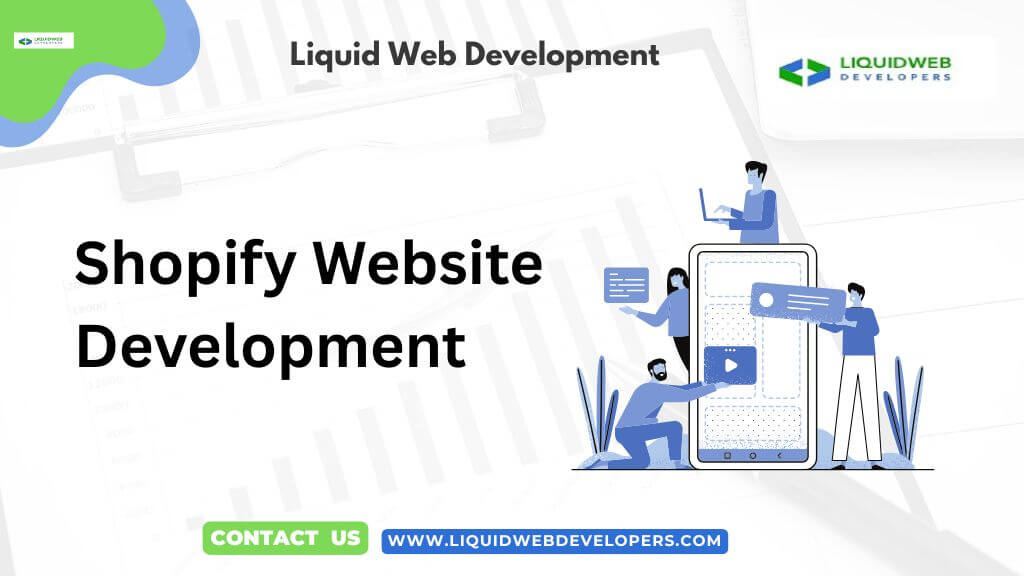Shopify Website Development: Complete Guide to Building High-Converting Stores

Look, if you’re reading this in 2025, you already know that Shopify website development isn’t just about throwing together another online store. Every day, thousands of entrepreneurs jump into ecommerce, thinking they’ll create a professional online store and watch money roll in. Reality check? Most fail within the first year because they don’t understand what actually makes customers buy.
Here’s what I’ve learned after building over 200 stores: successful ecommerce platform development starts with understanding your customer’s brain, not just pretty designs.
What is Shopify website development?
Shopify website development means building digital storefronts that actually convert visitors into paying customers. Sounds simple? It’s not. Every button placement, color choice, and word on your site either pushes people toward purchase or sends them running to competitors.
The best way to develop a Shopify store involves three critical elements most people ignore:
First, psychology-driven design. Your customers make buying decisions in 7 seconds. If your site doesn’t immediately answer “What’s in it for me?” you’ve lost them. Second, mobile-obsessed thinking. Over 73% of shoppers browse on phones. Yet I still see businesses obsessing over desktop designs while their mobile experience sucks. Third, speed matters more than fancy animations. Professional Shopify developers know that every extra second of loading time kills 7% of potential sales. Amazon proved this years ago.
Essential Features of Shopify for e Commerce Success
Why do smart business owners choose a right online store builder like Shopify over WordPress or custom solutions? Simple—it handles the technical nightmares so you can focus on selling. Payment gateway setup becomes effortless. Shopify connects with 100+ payment providers instantly. Compare that to WordPress, where you’re debugging payment failures at 2 AM while customers abandon carts. The inventory management system actually works. I’ve watched business owners manually update stock across five different platforms. Shopify syncs everything automatically. When someone buys your last item, it stops taking orders immediately.
Responsive ecommerce design happens automatically. Your store looks perfect on every device without hiring separate mobile developers. This matters because Google punishes sites that don’t work well on phones. Built-in Shopify SEO optimization gives you a fighting chance against competitors. Meta tags, sitemaps, and page speeds are optimized from day one. Most custom sites launch with terrible SEO that takes months to fix.
Complete Shopify website development Breakdown
Shopify development services range from basic setups to complex enterprise systems. Here’s what each actually involves:
Shopify theme customization starts around $2,000 for decent work. This includes modifying existing themes to match your brand colors, fonts, and layout preferences. Cheaper developers often deliver cookie-cutter results that scream “template.” Custom Shopify design means building exclusive themes from scratch. Expect $8k-$25k depending on size and complexity. Good Shopify development agency teams include designers, developers, and conversion specialists.
Shopify app integration can make or break your store’s functionality. Email marketing, reviews, inventory tracking, and analytics apps need careful selection. Too many apps slow down your site. Too few limit your capabilities. Shopify API development enables custom features that apps can’t provide. This includes connecting external systems, automating workflows, and building unique customer experiences.
Shopify Website Design & User Experience
Shopify storefront customization success depends on understanding customer behavior patterns. Most store owners make these critical mistakes:
They prioritize aesthetic appeal over conversion optimization. Beautiful designs that don’t sell are expensive decorations. Mobile-first Shopify development gets ignored until after desktop completion. Wrong approach. Start with mobile design, then scale up to desktop.
Shopify checkout optimization receives minimal attention despite controlling final sales conversion. Reducing checkout steps from 5 to 3 typically increases completions by 35%. Navigation complexity confuses customers. If visitors can’t find products within 3 clicks, they leave. Enhance customer shopping experience by simplifying everything.
Shopify website development Cost Breakdown 2025
Shopify website development cost varies dramatically based on your requirements and chosen developer quality. Here’s realistic pricing:
Basic store setup: $1,500-$4,000. This includes theme installation, basic customization, product uploads, and essential app installation. Perfect for small business ecommerce just starting out. Custom ecommerce solutions: $5k-$15k. Custom design, advanced functionality, third-party integrations, and conversion optimization. Most successful stores fall in this range.
Enterprise Shopify solutions: $20k-$100k. Complex integrations, custom apps, multi-location inventory, and advanced automation. Only necessary for high-volume businesses. Ecommerce development pricing often excludes ongoing costs. Monthly expenses include Shopify fees ($29-$2k), apps ($50-$5k), and maintenance ($200-$1k). Budget accordingly.
Types of Shopify Development Projects
Online business setup requirements vary significantly across industries. Here’s what different business models need:
B2B Shopify development necessitates the implementation of wholesale sale prices, customer-specific catalogs, and quote systems. B2B buyers expect different experiences than consumers. International sales are made possible by multi-currency Shopify store setups, but they also introduce complications.
Subscription businesses require Shopify subscription setup through apps like Recharge. Recurring billing, customer portals, and churn management become critical features. Large inventory stores require advanced product catalog development with powerful search, filtering, and categorization systems. Shopify speed optimization becomes crucial with thousands of products.
Shopify SEO & Marketing Integration
Shopify SEO optimization extends far beyond basic setup. Most store owners make these optimization mistakes:
They ignore technical SEO principles. Site speed, mobile optimization, and proper URL structures matter more than keyword stuffing. Email marketing integration gets perceived as an additional expense. Smart stores capture user emails instantly and nurture them through automated sequences.
Social media integration in Shopify requires strategic creativity. Simply adding social icons won’t generate more website traffic organically. Genuine outcomes are achieved through influencer partnerships and content marketing. High-converting product pages include additional images, careful descriptions, user reviews, and straightforward calls to action.
Shopify App Development Services
Shopify app development fixes problems that existing marketplace apps can’t overcome. Custom apps cost $5k-$50k, relying on complexity.
Private apps integrate with external systems like ERPs, CRMs, or stock management platforms. Public apps can generate periodic profits through the Shopify App Store.
App performance impacts store speed significantly. Professional Shopify developers carefully evaluate each app’s resource usage before installation.
Choosing the Right Shopify Development Agency
Find reliable Shopify developers by asking these specific questions:
How many Shopify stores have you built in our industry? Industry experience matters more than total project count. Can you show conversion rate improvements from past projects? Pretty designs mean nothing without sales results.
What’s your post-launch support process? Many Shopify development company teams disappear after project completion. Compare ecommerce development costs carefully. Cheapest options often cost more long-term through poor quality, missed deadlines, and ongoing fixes.
Shopify Migration Services
Shopify migration services assist businesses move from platforms like WooCommerce, Magento, or BigCommerce. Migration complexity depends on current site functions and modification options.
Data migration includes products, customers, orders, and SEO settings. Professional migrations preserve search rankings and customer accounts.
Ecommerce web design services often recommend redesigning during migration. Fresh designs can improve conversion rates significantly.
Shopify Development Process & Timeline
Professional setup ecommerce business online projects follow structured phases:
The discovery phase identifies requirements, target audience, and success metrics. Rushed discovery leads to scope creep and budget overruns. The design phase creates wireframes, mockups, and user experience flows. Client feedback integration happens before development begins.
The development phase builds functional stores with testing at each milestone. Quality assurance prevents launch-day disasters. Shopify development timeline typically spans 6-16 weeks for custom projects. Complex integrations and extensive customizations extend timelines.
Common Shopify Development Challenges & Solutions
Fix slow Shopify loading speed through systematic optimization:
Image compression and lazy loading reduce initial page loads. Most stores upload massive images that kill performance. App audit removes unnecessary plugins that consume resources. Many stores run 20+ apps when 8-10 would suffice.
Code optimization eliminates redundant scripts and CSS. Building scalable ecommerce platform architecture prevents future performance issues. Theme optimization ensures mobile responsiveness and cross-browser compatibility. Testing across devices prevents customer frustration.
The Future of Shopify Website Development
Automate ecommerce operations through AI-powered devices that develop custom features. Robotics, individualized advice, and dynamic pricing will be suggested however, not preferred. Optimize omnichannel experience using web, mobile, social, and physical stores. Users expect 100% successful experiences regardless of the interaction channel.
Voice commerce integration will revolutionize the customer shopping journey as smart speakers become purchase platforms. Augmented reality product visualization will enhance brand digital presence by letting customers see products in their actual environments.
